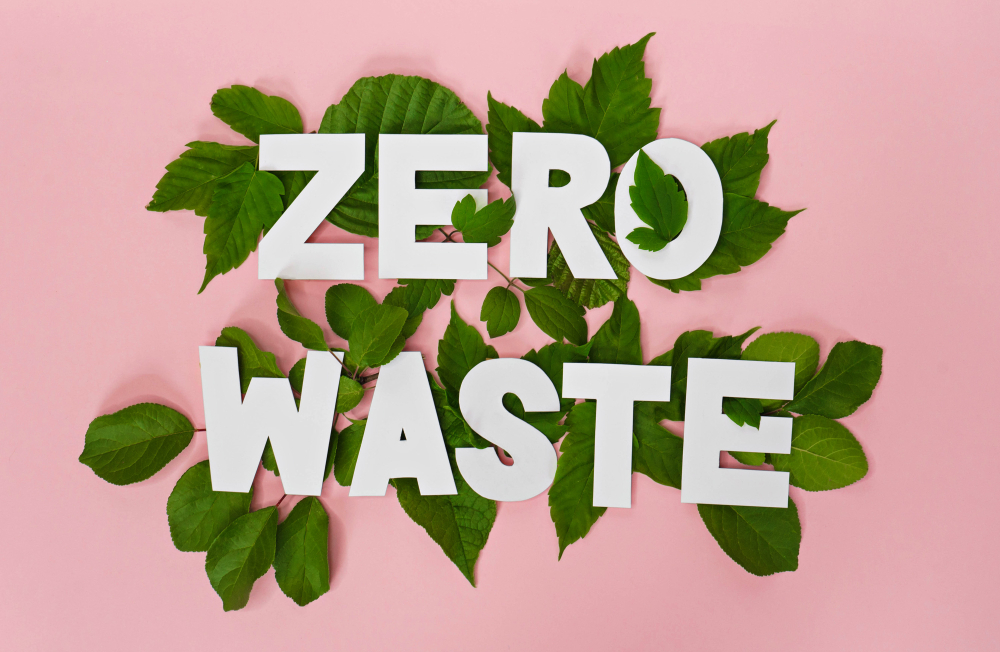Going Zero Waste in 5 Steps
Going zero waste doesn’t need to be hard! Here are 5 steps to going zero waste to help you begin the process!
Step 1. Just Say No to Crap
To truly go zero, one must commit to refusing to allow crap into your life. Before you buy anything (or accept any freebie) ask: is it designed to be used just once, or for a short time, and then thrown away? What happens to it when I’ve finished with it? Who produced it and in what conditions? What happens to ‘not currently recyclable?’ Where do gadgets go when they die?’
A question I’m often asked is ‘couldn’t I just use x, then recycle/compost it?’ The answer is yes, it will certainly reduce the amount of stuff that goes to the landfill, if that’s your aim. But consider the resources that went into producing the item before you bought it – extracting the raw material, manufacturing it, transporting it…..every time we dispose of something and buy more we repeat this cycle.
Forget about disposability and think instead about value. Why invest your money in something that you expect to use only briefly then get rid of? Disposing of stuff just means you’ll have to go back to the shops and buy some more. Who do you suppose benefits from this? Make life easy for yourself.
And wouldn’t you rather be surrounded by high quality, well-functioning items, than rubbish?
Step 2: Make the Changes That Will Have The Biggest Impact
I’m not going to tell you to bring your own reusable cups and bags, because you’ve already thought of that, and anyway, why start so small? Unless you drink a lot of takeaway coffees and use a lot of plastic bags, these probably aren’t your biggest waste generators.
For best results, make the changes that will have the biggest impact. Take a step back and consider everything you buy that doesn’t last that long, remembering that actual stuff takes more resources to produce than rubbish. Perhaps it’s gadgets that now sit unused in some box, fashion you buy but hardly wear, leisure equipment that spends most of the time in the loft. All of these took oil and water to produce, not to mention the climate-damaging emissions involved in manufacturing and transporting the stuff, or the exploitative labour practices involved in many mass produced goods. So consider all of these as well as the single-use disposables filling up landfill sacks.
If you have a lot of stuff sitting around going to waste, think about passing it on to someone who can use it. You get lovely clutter-free space, your recipient gets stuff cheaply or for free, and between you you have reduced the demand for more new stuff to be produced.
Then, have a look inside your bin and see what it’s mostly full of. Ask yourself why. And start from there.
Step 3: Reset Your Defaults
1) Only send to landfill what can’t be reused, composted or recycled.
As a society we tend to waste as default, and if we happen to be feeling virtuous, make the effort to recycle, or perhaps compost. Why? We could just as easily have recycling bins in all the places we have ‘general waste’ bins. And is the kitchen the only place we produce biodegradable waste? Most of what we throw away can be recycled or will rot.
2) Only buy something new if you have exhausted all the other options.
Rethink the idea that everything you need must be owned. Much of the stuff that sits unused in cupboards and garages across the land are items that were bought for specific occasions or activities. These are the kind of things that can easily be hired. Google it. You’d be surprised what you can hire.
Even better, could it be borrowed? If your family and friends can’t help, try Streetbank or see if there are any other local schemes, such as a Library of Things.You could save lots of money as well as space.
If you need to buy something (and it’s not food!) does it have to be brand new? Why? New stuff costs more money and isn’t necessarily better quality. In fact buying second hand is often a good way to get quality stuff cheaply. It’s easy and reduces the demand for new stuff to be produced.
And…..do you even need to buy? Free cycle, Freegle, and Olio are all sites offering pre-loved stuff to give away for free.
Step 4: Go for the Easy Wins
Who doesn’t love an easy win? And the good news is that the easiest thing you can do will also make the most difference and save you lots of money. That is: buy less stuff. Forget about spending Saturday afternoon at the shopping mall, deprived of fresh air and daylight, spending your earnings on stuff you may not even use that much. You can definitely think of better ways to spend your time and your money.
So take your reusable bag with you everywhere you go, and say no to single use plastic ones. Refuse plastic straws, and if you buy a lot of food on the go, take your own fork with you. Get a zero waste toothbrush next time. Take your own reusable cup to use with the office water cooler, and if you buy a lot of takeaway drinks, carry one with you too. Refill your water bottle.
Step 5: See the bigger picture
Consider that avoiding wasted stuff is one step of the journey to reduce your impact on the environment. Reducing your consumption of animal products and energy as well as avoiding the waste of food is also important, so anything you can do reduce these will help.

